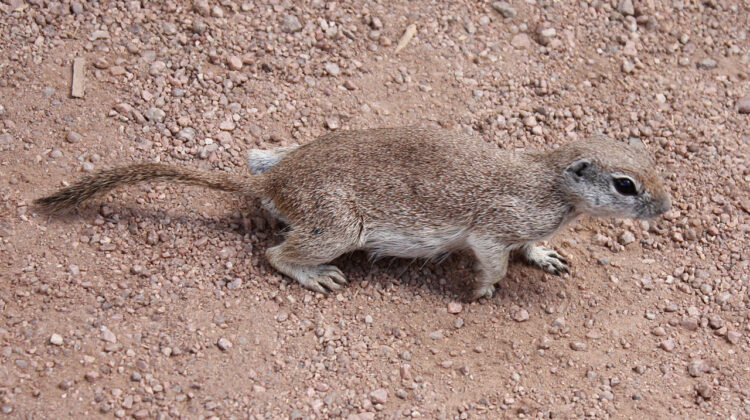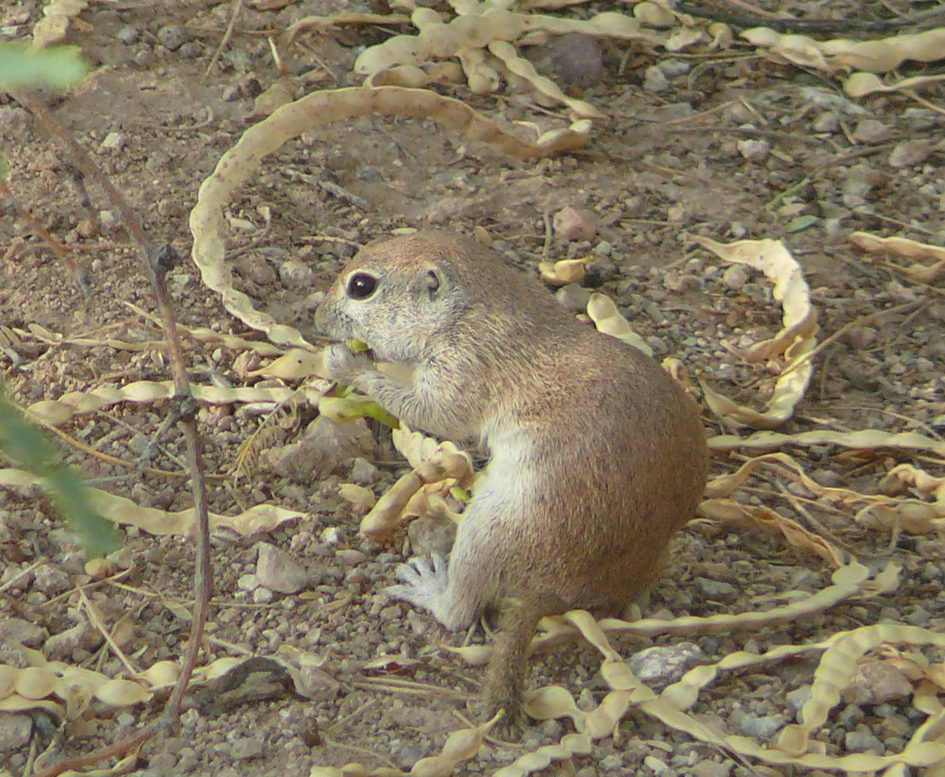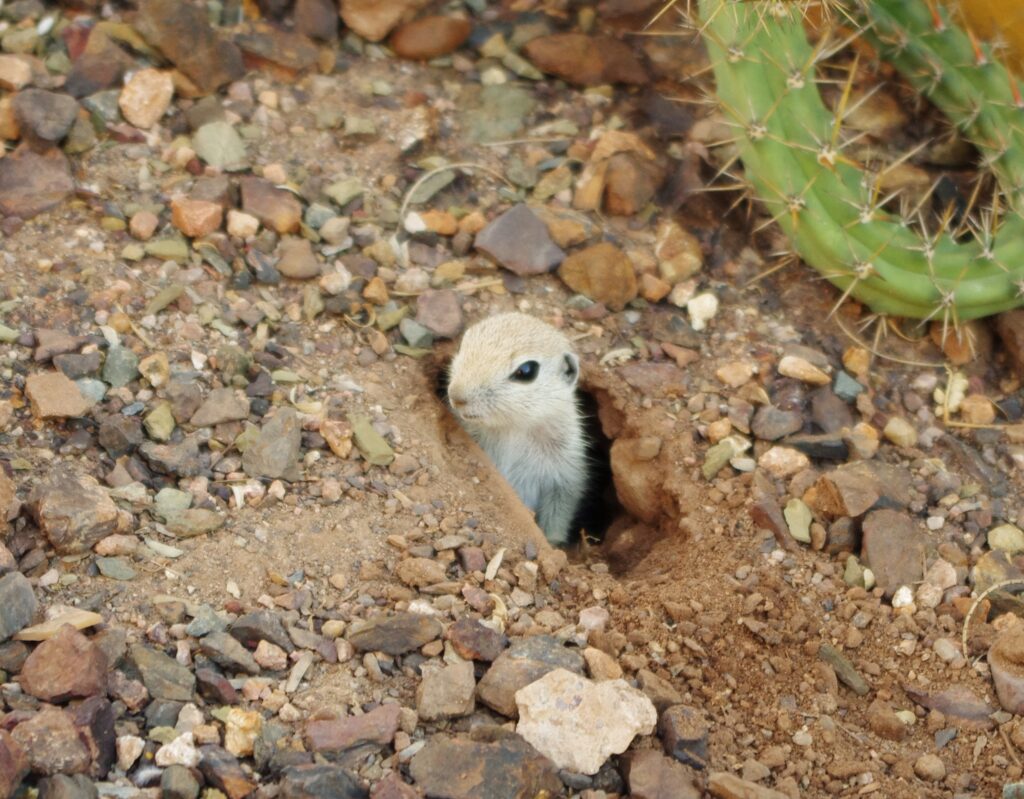
The Round-Tailed Ground Squirrel, scientifically known as Xerospermophilus tereticaudus, is a species of ground squirrel. They are commonly found in the Southwestern United States and Northwestern Mexico. These creatures are called ground squirrels because they are known to burrow in loose soil, usually under mesquite trees and creosote bushes.
Characteristics
Round-tailed ground squirrels are generally small creatures. At birth, they weigh around 3.9 grams (0.14 oz). Adults typically weigh around 125 grams (4.4 oz). Their long, round tail and long, hairy hind feet are their distinguishing physical features. They have a uniform sandy color, which matches the soil they burrow in. The underside of their body is typically a lighter shade. They average around 204 to 278 millimeters (8.0 to 10.9 in) in length, including the tail which is from 60 to 112 millimeters (2.4 to 4.4 in) long.

Lifecycle
The gestation period for Round-Tailed Ground Squirrels is 28 days, and an average of 5.4 pups are born in each litter. These creatures reach sexual maturity at 325 days. While there is little information available about their longevity, one wild-born specimen lived to approximately 8.9 years in captivity. Coyotes, badgers, hawks, and snakes are the primary predators of Round-Tailed Ground Squirrels. These animals have also been found to have the Coccidian parasite Eimeria vilasi, which is typically found in other rodents and Old World marmotine rodents.

Behavior
Round-Tailed Ground Squirrels are well-adapted to desert life, as they primarily reside in the desert regions of the Southwestern United States, northeastern Baja California, and northwestern Mexico. They can stay active even on the hottest of days, although they tend to limit their activity during the heat of the afternoon sun. They live underground in the winter, typically from late August or September until January or February. These creatures go into torpor but do not hibernate. They exhibit little aggression or competition, with their main activities including caring for newborns, finding better protection for their resources, and reducing predation. They also chase each other and nuzzle.
The greatest predator of the Round-Tailed Ground Squirrel is a snake, with the type of snake varying depending on the locality. As a result, these ground squirrels have evolved to perform anti-snake displays to defend themselves. They tend to put on a prominent display by moving their tail back-and-forth horizontally. They also approach the predator and sometimes kick dirt at the snake.

Social Structure
Round-Tailed Ground Squirrels have a semi-colonial social structure and will alert others of impending danger with a high-pitched alarm call. They will chase away other ground squirrels who get too close to their own burrow. During the breeding season, from January through March, the males are dominant, while the females dominate during the raising of the young, which takes place in March and April. Recent studies suggest that they may have a matrilineal population structure with more socialization than anticipated. This means that Round-Tailed Ground Squirrels may have a greater tendency to socialize within familial groups of female squirrels.
Diet
Round-Tailed Ground Squirrels are omnivores. They mostly feed on green vegetation, especially in the summer. They also eat insects, including ants, beetles, and grasshoppers. In the winter, they rely more on seeds and mesquite beans. Round-tailed ground squirrels have been observed caching seeds and other food items for later use. They are able to live without drinking water, obtaining all the moisture they need from their diet. The diet of these squirrels can have an impact on seed dispersal and plant regeneration in their habitat. They play an important ecological role in the desert ecosystem as seed predators and seed dispersers.

Leave a Reply